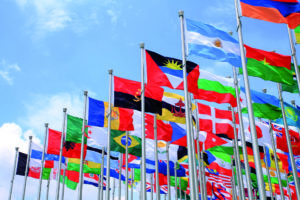Every year thousands of students file their applications to pursue higher studies abroad. Nepali students travel to different destinations for higher education and opt for popular streams such as health, management, science, and technology.
Data from the Abroad Study Permission Section at the Ministry of Education show that 58,758 students applied for no-objection certificates to study abroad in the fiscal year 2017/18. The ministry issued 85,758 certificates, mandatory for students wishing to pursue higher education abroad, between mid-July 2018, and the end of 2019.
In recent years, Australia has been the prime destination for Nepal students, pulling their interest in studying abroad. According to the statics of the Ministry of Education, 60 percent of Nepali students chose Australia out of the total 63,259 students receiving no-objection in Nepali fiscal year 2017/2018 alone. In 2013, only 25,025 Nepali students went abroad to study. They spent Rs15.12 billion abroad.
Apart from Australia, other destinations that are pulling Nepali students are Japan, Cyprus, India, China, Canada, United States, New Zealand, South Korea, and UAE respectively. However, students going to India do not need no-objection certificates. Thus the quantity of students going to India for higher education is seeming higher.
Records show that, in 2018, Nepali students went to 69 countries to study, including to destinations that have a poor standard of education compared to Nepal. Some of the relatively obscure countries that Nepali students go abroad for study are Malta, Bosnia Herzegovina, Slovenia, Azerbaijan, Kyrgyzstan, Costa Rica, Armenia, and even Antigua & Barbuda.
As per the initial study, the reason more students are going abroad is related to approval to work, allowing them to earn going jobs even while they enrolled at the universities.
The number of students going to Japan, however, dropped from 10,363 to 8,523 during the period. The number of Nepali students going to the US has also dropped from the fourth top destination to the seventh most popular destination, only 1,491 students went to US universities, 300 lesser than in 2017.
Meanwhile, Cyprus had emerged as the number 3 destination for Nepali students during that respective period. The number of students grew three-fold in 2018 compared to a year ago. A total of 2,302 students applied for NOC for getting enrolled in Cyprus. The reason for the increase is related to it is relatively easier to get admission into colleges there also students hold the hope for entering Europe. The UAE also saw an increase during the time frame, ranking 10th, with 849 students entering the country.
Nepali students are flocking abroad for their higher education in droves, with their numbers increasing each year.
Official government statistics note that just over 16,500 students studied abroad in 2013/14.
It was reported that Nepali students going abroad for higher studies spent 19.7 percent more in the past year compared to the previous one, reaching Rs40.09 billion (approximately US$351 million at the time of writing).
A few years ago, only 25,025 Nepali students studied abroad, spending Rs15.12 billion (US$132 million).
Nepal is one of the 48 least developed countries (LDC) in the world but hopes to graduate to a developing country by 2022.
The country’s developments have been moving at a glacial pace, hampered by factors such as partisan squabbling, among other reasons, making it unsurprising why Nepali students who can afford to study abroad are doing so in droves.
Nepali students make the third-largest source of international students in Australia, behind China and India.
The report notes that Nepalese students who go to Australia overwhelmingly choose New South Wales (NSW) for their study. Nearly two-thirds of total Nepali enrolments were in NSW, a trend the Brisbane Times noted to be more pronounced than Indian students’ preference for Melbourne over Sydney.
However, this trend is likely to change post-Covid.
On March 3, 2020, the government decided to stop issuing the no-objection certificates due to the outbreak of Covid-19 in various countries. The Abroad Study Permission Section of the Ministry stopped providing students permits to study in China, Japan, South Korea, Italy, Iran, and Singapore in the first phase. The measure was expanded to the other countries as well with the pandemic spreading across the world.
With the suspension of the NOC distribution and language tests, the lockdown to contain the virus has made it difficult for students to complete their paperwork.
Almost 4,000 students who had applied to universities abroad have been affected. Meanwhile, Australia has closed its air connectivity until January 2021.
However, the Cabinet on August 26, 2020, decided to resume issuing NOCs.
Education consultants however believe that despite the pandemic many students will go-ahead to pursue their study abroad. They reckon that students may postpone their plan by a semester or by a year, but still, they will apply as many have already prepared their documents.
Education ministry records show that it issued 85,758 NOCs between July 17, 2018, and the end of 2019. The highest number of permits were issued for the June/July intake. However, issuance of the permits was stopped during the same period this year due to Covid-19.
According to Nepal Rastra Bank, students spending on abroad study decreased by 44 percent to Rs 25.2 billion in the last fiscal year from Rs 41 billion in the fiscal year 2018/19.

